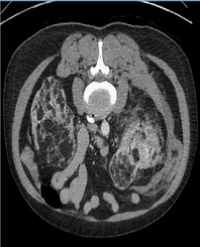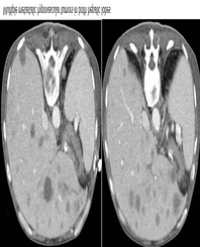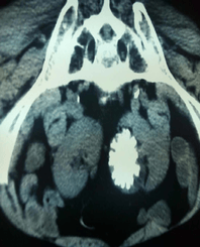Only approximately 5% of urothelial tumors arise in the upper urinary tract, > 90% of which are urothelial (formerly called transitional cell) carcinomas. Upper tract urothelial carcinoma (UTUC) arise from the renal pelvis and the ureter. Genetic and environmental risk factors may contribute to the development of UTUC. Exposure to or consumption of tobacco, phenacetine, aristolochic acid, aromatic amines, and arsenic contaminated drinking water are known risk factors for urothelial carcinogenesis. Clinical features include hematuria, flank pain, hydronephrosis, palpable flank mass, renal insufficiency, hypertension and a high propensity for distant metastasis. Paraneoplastic syndrome may include hypercalcemia, thrombocytopenia and leukemoid reaction. Because estimated 60% of UTUCs are invasive at diagnosis, appropriate diagnosis and management is most important. The predominant sites of distant metastasis at diagnosis of UTUC were the lungs, lymph nodes, bone and liver. Cutaneous metastasis is extremely rare and indicates the late manifestation of a systemic spread. Combinations of urine cytology, cystoscopy, ureteroscopic biopsy, and computed tomography are currently diagnostic tools. Surgery with radical nephroureterectomy and excision of a bladder cuff is the gold standard for locally invasive tumors. Neoadjuvant or adjuvant chemotherapy with cisplatin- or platinum-based regimens may improve survival in patients with metastatic disease. Checkpoint inhibitors immunotherapy targeting programmed cell death 1 receptor and its ligand have provided a new treatment option, particularly for patients with progressive UTUC disease following platinum-based chemotherapy. Tumor grade and stage are major prognostic factors for oncological outcomes. As potential tumor recurrence, repeated surveillance by urine cytology, cystoscopy, upper tract imaging and ureteroscopy following treatment are required.
Yee-Huang Ku1 , Chin-Ming Chen2 and Wen-Liang Yu2,3*



